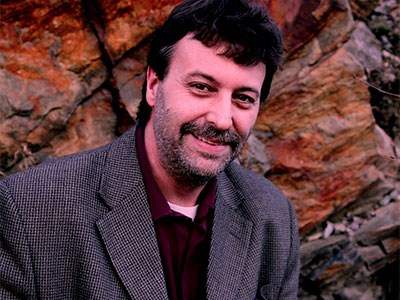The Radiation Safety Institute of
Canada is planning a free course to inform workers and managers in
Ontario’s mining sector about the potential danger radon gas poses
underground.
Radon is a heavy gas that is invisible and
odourless.
After cigarettes, it is the second leading cause of
lung cancer fatalities in Ontario.
The gas is radioactive, and is responsible for 847 lung cancer deaths in Ontario each year, about 14 per cent of all fatalities related to the disease.
Radon is formed when uranium in the
ground breaks down. It can enter people’s homes through cracks and
openings in the foundation, and is typically present in higher
quantities at lower levels because it is heavier than the surrounding
air.
“It’s everywhere,” said Steven Mahoney, institute
president and CEO. “Wherever there’s rock and dirt you’re going
to find radon gas in certain levels.”
Through a grant from the Ministry of Labour’s new Occupational Health and Safety Prevention and Innovation Program, the institute plans to introduce an online course within six months to inform mine managers how they can reduce radon levels, that will educate workers about their rights to refuse unsafe work, and show what personal safety equipment they can use to reduce their exposure to radon.
While organizations like Workplace
Safety North have measured radon levels in mines in the past, and
found ventilation systems adequately dispersed the radon, Mahoney
said to his knowledge no thorough testing has been done.
“There’s
no question in our mind that there’s radon there,” Mahoney said.
“Is it properly ventilated?”
Health Canada says a radon
concentration exceeding 200 becquerels per cubic metre should be of
concern. A becquerel measures the amount of radioactive activity in a
location.
Health Canada has calculated about five per cent
of homes in Sudbury exceed radon measurements of 200 becquerels per
cubic metre.
Mahoney said radon levels can be
managed with proper ventilation.
However, the program is
being categorized by a Sudbury researcher as alarmist and a waste of
resources.
Daniel Cluff, a physicist and mine engineer, said the ventilation systems in modern mines ensure radon gas does not constitute a health and safety issue.
In the early 1990s, Cluff and his colleagues measured radon and other sources of radiation at the 6,800 level of Creighton Mine ahead of the construction of SNOLAB, the underground laboratory built to observe subatomic particles called neutrinos.
For the lab to be effective, it had to free of dust and could not be located near any high levels of radiation.
“Every (radiation) measurement was below the allowable levels for your household,” Cluff said.
When uranium and thorium release radon into the surrounding air, the radon also starts to decay and forms progeny – radioactive elements with various half-lives.
Some progeny, like polonium-214, form in a fraction of a second, while others can take minutes, days, or even years to form.
It is the radon progeny that can cling to dust particles and cause lung cancer in high enough doses.
The default equilibrium when radon starts to decay is 1, and when the surrounding air is filtered, to remove dust and the progeny that have attached to that dust, the equilibrium decreases.
Down in Creighton, Cluff and his colleagues measured equilibrium factors of 0.18 and 0.28.
“That means the ventilation is excellent because it’s getting rid of all the progeny,” he said.
And the ventilation systems have only gotten better since the early 1990s, he added.
It was uranium mines like those in Elliot Lake that first raised concerns about radon in underground environments. More than 200 miners there died due to radiation exposure.
The Radiation Safety Institute of Canada was formed as a response to those deaths.
The province’s recent Mining Health, Safety and Prevention Review recommended that the Ministry of Labour review occupational exposure limits for such hazards as nitrogen dioxide and diesel particulate matter. Radon was one of the hazards identified in the report.




